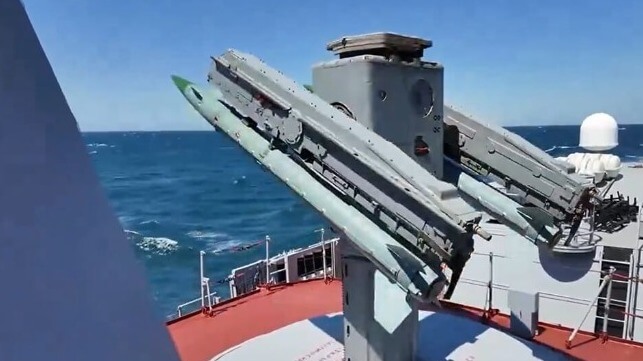Lloyd's: A Geopolitical Conflict Could Cost Global Trade $50 Trillion

Shipping interests have grown used to serious geopolitical disruption over the past few years, from the invasion of Ukraine and Russian attacks on shipping to the Houthi blockade on Red Sea traffic. The possibility of large-scale conflict is baked into industry assumptions at this point, but without a firm metric for the cost. Insurer Lloyd's has put a number on the maximum potential impact of a hypothetical geopolitical conflict, and it is unfathomably large.
In the latest edition of Lloyd's systemic risk series, the insurer focused on a hypothetical regional conflict causing widespread disruption to global trade patterns. Since about 80 percent of the world's imports and exports are at sea at any given moment, the disruption of global shipping lanes would be among the greatest economic threats from an escalating regional-scale confrontation.
Lloyd's considered a scenario very much like the invasion of Ukraine or a hypothetical Chinese takeover of Taiwan: a superpower invades a major economy, disrupting global trade patterns and supply chains. The invasion strategy includes an internet blackout, cyberattacks on infrastructure, and a physical blockade of trade in and out of the country. Beyond strikes on military targets, the invading force hits power generation, transport and communications.
Meanwhile, another superpower and its allies respond to the invasion and provide support to the smaller country, creating an escalating conflict and a tit-for-tat sanctions regime. Opposing forces square off in the affected region, and the invading force declares a naval blockade of the nearby shipping lanes. Vessel operators have to reroute around the area of conflict, and trade volumes are affected by sanctions and transport difficulties.
The disagreement eventually devolves into military action between the two sides, shutting down nearby shipping lanes and other alternative routes. This affects supply chains for raw materials, foodstuffs, microchips and equipment, causing shortages and driving up inflation around the world.
"Industries dependent on critical materials such as semiconductors and rare minerals – healthcare (medical devices), technology, automotive and many more – would likely face chronic shortages and delays," Lloyd's concluded. "The cascading effects of global trade disruptions, combined with escalating sanctions and closed shipping lines, is likely to drive inflation or food shortages in some states."
Lloyd's estimates that the five-year economic loss from this scenario would be somewhere between $8 and $50 trillion, equating to a global GDP loss of about one to seven percent. The most likely level of loss would be about $15 trillion; Lloyd's predicts that the probability of the most extreme $50 trillion scenario is about half of one percentage point.
Given its preeminent role in the global economy, China would be the nation most affected in all cases because it is deeply interconnected with trade, Lloyd's suggests. Europe and the Asia Pacific would suffer significant economic losses as well; North America would be substantially less affected on a dollar basis, sustaining only $5 trillion in losses over five years in the worst case scenario (10 percent of the global impact).
No comments:
Post a Comment